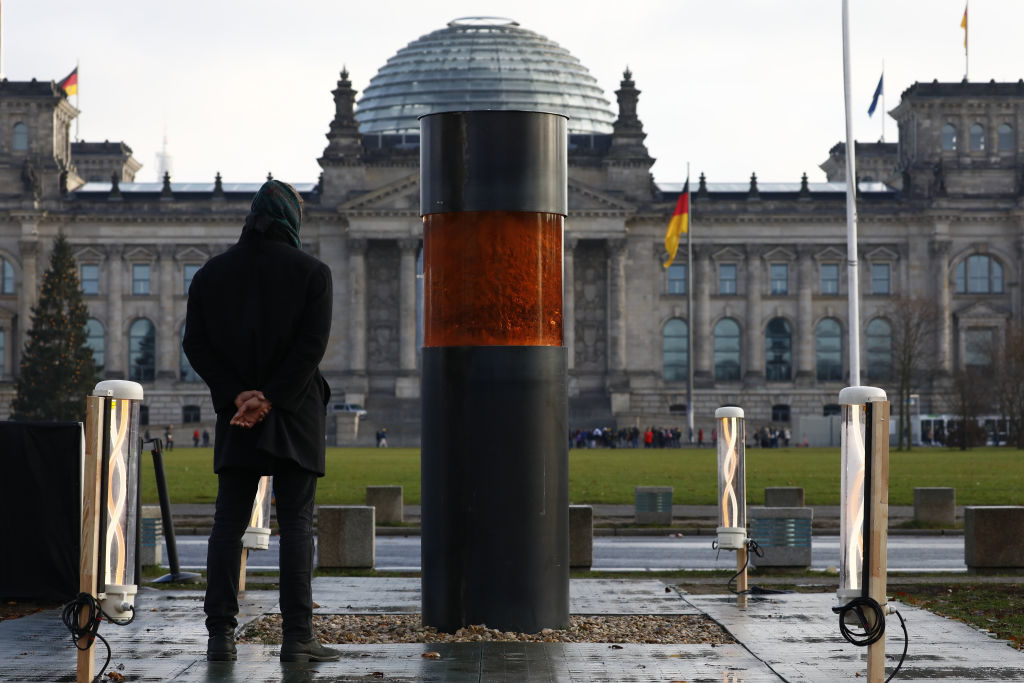Politics
Activists Used a Sledgehammer to Attack Berlin’s Newest Holocaust Memorial, Objecting to the Use of Victims’ Ashes
The monument allegedly contained the ashes of Jewish victims of the Nazi regime.

The monument allegedly contained the ashes of Jewish victims of the Nazi regime.

Kate Brown

A group of activists failed in their attempt to dismantle Berlin’s most controversial Holocaust memorial. They were upset that the provocative sculpture originally contained the ashes of victims of the Nazi regime along with soil collected from the sites of concentration camps.
Around 20 members of the Action Artists Committee (AKK) tried to take down the temporary monument near the Reichstag, Germany’s federal parliamentary building, on January 5. The activists, who were stopped by police, used an angle grinder and a sledgehammer against the eight-foot-tall steel column installed by the art collective the Center for Political Beauty (ZPS) in December.
“No one should make art and politics with ashes of Holocaust victims,” AKK group member Eliyah Havemann told the German media. During their action, members carried the flag of Israel. Havemann’s grandfather, Dagobert Biermann, was a German resistance fighter in World War II who was murdered by the Nazis in Auschwitz-Birkenau in 1942.
The Center for Political Beauty, a self-described “assault team,” had installed the monument, which it claimed contained remains of Jewish victims of Nazi persecution. The ZPS apologized for the upset caused to Holocaust survivors and their relatives. It has since said it has removed the human remains.
The monument was originally intended as an artistic gesture to warn German Chancellor Angela Merkel’s party, the CDU, against cooperating with the far-right AfD party. In 2017, the ZPS installed another Holocaust memorial near the home of an AfD politician.
Die Säule des #ZPS in Berlin wird gerade abgebaut. Aktuell hat die @polizeiberlin die Demontage gestoppt und versucht, die rechtliche Lage zu klären. #akkvorschlaghammer #b0501 pic.twitter.com/WY02wt5uiK
— democ. (@democ_de) January 5, 2020
The column is said to contain soil gathered at 23 sites near Nazi death camps across Germany, Poland, and Ukraine. The ZPS said it found traces of human remains in around 70 percent of the more than 200 samples it collected. After the outcry in December, the group says that it gave the human ashes to the Orthodox Rabbinical Conference so they could be properly buried in a Jewish cemetery. It is against Jewish religious law to use human remains.
“We would like to sincerely apologize to those affected, their relatives and surviving dependants, who we have hurt in their feelings,” the collective said, according to Die Zeit.
For the time being, the collective’s memorial remains in place, though the local government office told rbb that it is trying to remove the installation as quickly as possible.
The controversial column stands on the former site of the Kroll Opera House, which served as a home for the German parliament after the Reichstag burned down in 1933. Hitler used the fire as a pretext to seize power as a dictator.